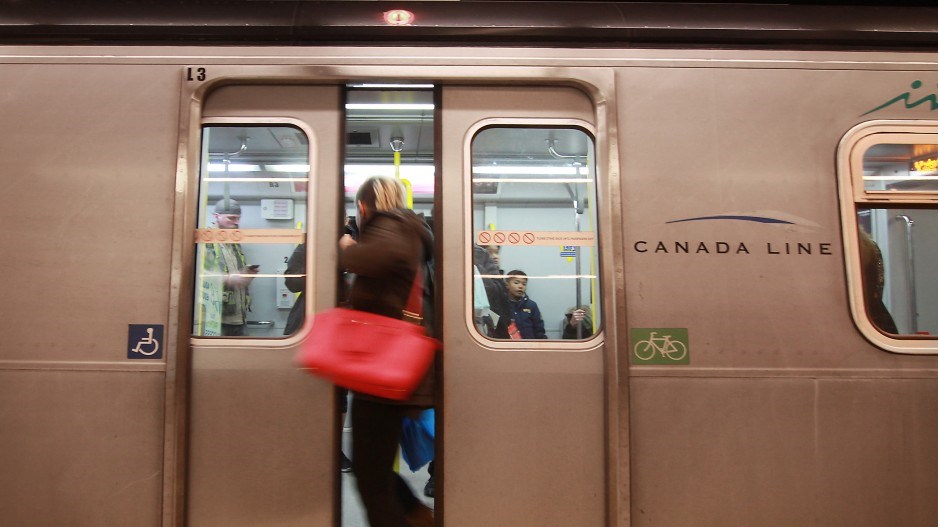When TransLink concluded its original multi-decade strategic plan in 1993, technology was often considered complementary or an augmentation for organizations, according to Andrew McCurran.
“But it’s increasingly like every company is a technology company and every plan and every government agency needs to be technology-driven,” said the regional transportation authority’s director of strategic planning and policy.
And as TransLink embarks this summer on the first phase of public consultations for its upcoming 30-year Transport 2050 strategic plan, it will be soliciting advice and direction for how innovations will be reshaping regional transportation in the future.
Front and centre on the Transport 2050 website is a panel highlighting how advancements in driverless vehicles, electric vehicles, connected cars (vehicles that communicate directly with one another) and shared mobility services for cars, bikes and scooters have the potential to change the way goods and people get around the region.
“When we’re thinking about how to deploy this technology … we should really start with the question: What do we care about as a region? What kind of place do we want to live in? What are our values as residents of Metro Vancouver?” McCurran said.
It’s a wise strategy, according to Spare CEO Kristoffer Vik Hansen, whose Vancouver-based startup has developed a platform to help cities and transit authorities manage transportation networks more efficiently and enable multimodal trip planning.
“But I do think there needs to be an inherent understanding that that plan can’t be set in stone,” he told Business in Vancouver.
He pointed out that when the internet first emerged decades ago, its creators couldn’t foresee it leading to the creation of Snapchat, a social media app that allows users to produce shareable stories through images and videos.
So what happens if the region delivers a plan that places too much emphasis on one technology or doesn’t leave room for a new technology to emerge? Vik Hansen said.
“We need to expect that there’s going to be a Snapchat of transportation,” he said.
Last month Spare announced it had raised $6 million in a seed-funding round led by Mitsubishi Corp. (TYO:8058), which it’s partnering with to provide software for commercial on-demand transit services in Japan.
Its largest partner agency is Texas’ Dallas Area Rapid Transit (DART).
TransLink has yet to tap Spare for its services.
But Vik Hansen said Spare would engage with TransLink as consultations progress.
In the meantime, he hopes Canadian organizations start to break free from the common habit of not using locally developed technology until it can be proven it works in other jurisdictions.
“We need to move away from that mindset, to be honest. As long as it’s seen as an experiment, there’s no shame in failing,” Vik Hansen said.
Local data analytics firm UrbanLogiq, which specializes in harnessing data sources for local governments and using artificial intelligence to derive insights, has followed previous consultations but typically doesn’t weigh in on the debates, according to CEO Mark Masongsong.
He said the company will be following the Transport 2050 consultation process and hopes TransLink comes away with “enduring, universal principles” from the public.
UrbanLogiq has developed expertise in transportation partnering with the City of Surrey to take data from traffic monitoring systems to better understand congestion and predict traffic patterns. Meanwhile, the City of Richmond partnered with the firm for its bid in the Smart Cities Challenge.
“When people think, ‘What are my priorities?’ they think about the Port Mann Bridge or SkyTrain. But if you’re planning 30 years out, one of the things people need to start getting their heads around is these emerging technologies that will fundamentally alter the fabric of our society,” Masongsong said.
One example he pointed to is how the proliferation of electric vehicles in Norway has led to fewer people going to gas stations in that country, while drivers are now turning up in numbers at local McDonald’s (NYSE:MCD) outlets to charge their cars.
“The one caution I would have around the current TransLink process is … people are talking about what they need in the next five and 10 years, but there’s opportunities to have deeper discussions about what’s going to happen in longer timelines,” Masongsong said.
“The facts on the ground will change, whether it be population, demographics, technology or depending on some potential [issues] on the more alarming side, even things like climate change could impact what our communities are looking like 30 years from now.”
McCurran said taking into account unforeseen developments in technology is an issue strategic planners of all stripes – not just regional transportation – are grappling with.
“Things are moving quickly and the future is uncertain,” he said.
“It doesn’t necessarily make sense to make long-range forecasts that predict with this sort of false precision about what the future will look like.”
Instead, TransLink and the Metro Vancouver Regional District last month released a report outlining four distinct scenarios that could unfold in the region by 2050 to help guide the organizations:
A. Current economic, growth and development trends continue.
B. Automation-driven job losses and out-migration result in a regional economy in decline.
C. Barriers to global trade spur a more self-sufficient local economy.
D. Automation drives a new economic boom led by new creative and knowledge sectors.
The report predicts that in Scenario D, the population will grow by 80% or 4.6 million residents, and the share of personal vehicles that are automated will rise from 0% in 2019 to 70% by 2050.
Growth in those fields is significantly smaller in the other scenarios.
Transport 2050, McCurran said, should be viewed as “more of a playbook rather than a detailed plan that is going to be unchanging and fixed.”




